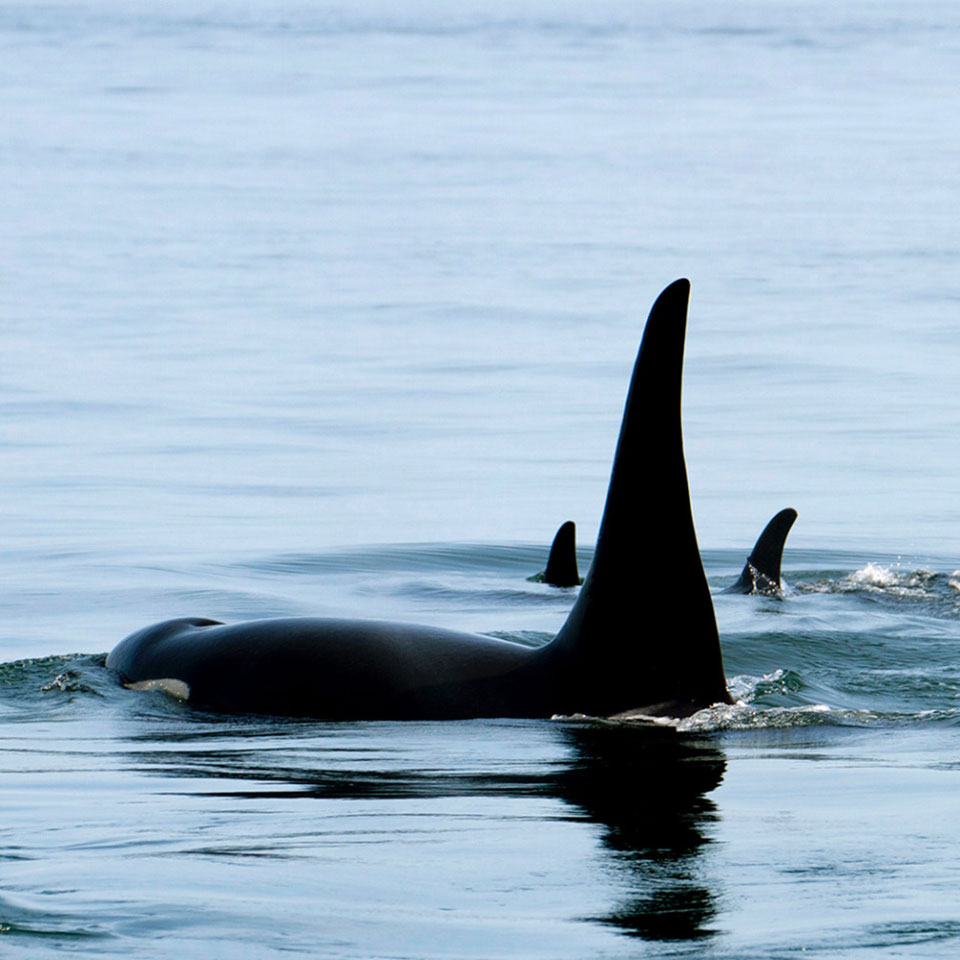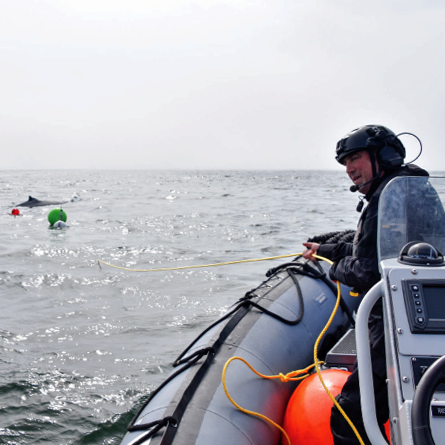CRITICAL DISTANCE: Under the waves with the Southern Resident Killer Whales. Mixed Reality Experience

PHOTO 2020: MAUREEN WELTON
Join us for a round-up of whale research on and around Saturna Island in 2020.
Presentations will be made by:
SUSIE WASHINGTON-SMYTH & SANJIV SHRIVASTAVA. A report on the surprising findings of the Saturna Sighters Citizen Science project, working to establish a baseline count of whales in the center of the Salish Sea.
LUCY QUAYLE SFU MSc student. A report on her whale and marine vessel data collection and observations in the Interim Sanctuary Zone at East Point.

PHOTO: MARLENE CUMMINGS

PHOTO: MAUREEN WELTON
In the summer of 2020, researchers from the University of British Columbia (UBC) spent six weeks on a research expedition on the MV Gikumi. Led by Dr. Andrew Trites, the team studied the behaviours of northern and southern resident killer whales in their territories. They used hydro-acoustics to assess prey abundance, and placed suction-cup camera tags onto whales to record what they see and hear, as well as their three-dimensional movements, diving depths and feeding behaviours. During this talk, Trites will give some first impressions about what the team observed and will share some of the things they have learned so far.
Dr. Andrew Trites, is the Director of UBC’s Marine Mammal Research Unit and a professor at the Institute for the Oceans and Fisheries. His research interests include the biology of marine mammals, population dynamics, bioenergetics, fisheries, and data analysis.

Marine mammals use underwater sound for communicating, foraging, detecting predators, breeding, and navigating. Quiet oceans are very important for these animals. Noise from ships and other human activities reduces their ability to detect important sounds, and at least temporarily degrades nearby ocean habitat. Critically endangered Southern Resident Killer Whales (SRKW) are highly vocal animals that are particularly dependent on quiet environments. They also use sound for echolocation foraging, so a noisy environment can directly reduce their ability to find and capture their already-scarce Chinook Salmon prey. Transport Canada understands quiet oceans are especially important for SRKW and have sponsored research aimed at reducing ship noise in the Salish Sea. Working with the Port of Vancouver’s ECHO program, they engaged marine science company JASCO Applied Sciences to install a real-time underwater listening station in the shipping lanes of Boundary Pass, south of Saturna Island. The station’s primary purpose is to accurately measure the noise emissions of most commercial vessels transiting the pass. The station also detects and reports acoustic detections of SRKW and other species, and continuously tracks ocean noise levels. The Boundary Pass Underwater Listening Station was installed in May 2020 and has been collecting and analyzing real-time acoustic data since then. In this talk, David will describe the station’s equipment and provide examples of data collected with context on how the findings are being used.
David Hannay is the Chief Science Officer of JASCO Applied Sciences. He has been a marine acoustician at JASCO for more than 30 years, working for most of his career on environmental noise assessments related to human noise impacts on marine fauna. He has led some of the world’s largest marine acoustic monitoring studies over the last two decades and has published study results in a large number of peer reviewed scientific papers. His recent research has focused on ship noise measurements and modelling.

The Photographic Observation Study (POS) is an initiative led by the CORAL Group at the University of Victoria. Their work includes the development and use of autonomous cameras and other sensors to monitor vessels of different types and marine mammals in key ecological areas within the Salish Sea. Currently, POS is operating at three sites: near Otter Point, at Sheringham Point, and near East Point on Saturna Island. During this talk, Serra-Sogas will present data collected at the Saturna site, which has been operating since 2017, and how POS is using this data to answer a number of questions related to vessel management, marine mammal behaviour, and the effectiveness of conservation management measures.
Norma Serra-Sogas, MSc., is a Research Associate with the CORAL Group at the University of Victoria. Her research interests include spatial analysis and visualization for marine pollution monitoring and risk assessment, specifically oil pollution from anthropologic marine activities. She has a background in GIS and marine biology, and has worked on research projects in Spain, Alaska, and now in Canada.

For many years, Paul Cottrell and his team at DFO, have counted on 18 hydrophones in the Salish Sea to detect the calls and track movements of killer whales. One of those hydrophones is situated in Boundary Pass, off Saturna Island. In 2018, Google’s artificial intelligence unit proposed using AI to identify and distinguish whale sounds to be able to follow the movements of killer whales. They’re using DFO whale recordings to train the technology and alert Paul and his team when orcas are present. Paul will make a presentation on the DFO Hydrophone Network in the Salish Sea and give an update on the Google AI project.
Paul Cottrell is the Pacific Marine Mammals Coordinator for the Department of Fisheries and Oceans Canada. He is British Columbia’s only certified whale disentangler and is a member of the International Whaling Commission’s Expert Global Whale Entanglement Response Group. Paul is a marine biologist and has worked with Michael Bigg, the founder of modern research on killer whales, and orca specialists Graeme Ellis and John Ford. He has served as “fish cop” monitoring fisheries openings and closings, and as policy coordinator for whale watching fleets. He’s been the marine mammal coordinator since 2007 and teaches Indigenous groups in the art of safely tracking distressed and entangled whales.

The Saturna Sighting Network was launched in the summer of 2020 as a citizen science project to monitor whales around East Point. The catalyst for this project was the implementation of the Interim Sanctuary Zone (ISZ) off Saturna Island and concern about the lack of data regarding the Southern Resident Killer Whales at the eastern end of Boundary Pass. Residents of Saturna began monitoring cetacean activity in nearby waters and reporting to a portal in the British Columbia Cetacean Sighting Network Sightings framework. The Sighting Network collaborated with Lucy Quayle (a Master’s student studying whales and marine vessels in Boundary Pass), the DFO Compliance and Enforcement Division, and the Parks Canada Warden Service to develop a verifiable reporting system for vessel infractions in the ISZ off East Point.
Specific to cetaceans, the Saturna Sighting Network has collected consistent data on the frequency, types, and distribution of whales transiting through this zone and adjacent areas to the ISZ. The data, which will be presented in this talk, will be provided to governmental agencies to aid in research on conservation and compliance in and around the ISZ. The data will also form the basis for additional research projects. The project has great support from the community with sponsorship from the Saturna Island Marine Research and Education Society (SIMRES), the Saturna Island Parks Liaison Committee, and the Saturna Environmental Education Centre (SEEC).
Susie Washington-Smyth is the coordinator of the Saturna Sighting Network. She is one of Canada’s well-known environmental educators and conservation activists. She has worked for decades in Canada’s environmental movement, bridging relationships between environmental and community groups, the private sector, and government. Her work in consultation and environmental management has guided government policy from national parks to impact assessment and environmental indicators. She has lived at East Point on Saturna Island for 28 years and has been an observer of the land and waters surrounding the island.
Sanjiv Shrivastava is a physicist with multi-disciplinary research interests, primarily with a focus on applications of principles and techniques of nuclear, condensed matter and surface physics, and instrumentation in every aspect of life. Sanjiv has academic research experience in diamond-physics, probe microscopy, biomaterials, statistical-psychology, as well as the politics of education. Sanjiv has worked with the Saturna Sighting Network to evaluate and interpret the research data.


Physical and acoustic disturbance caused by vessels is listed as one of the key threats to cetaceans in the Salish Sea. In this talk, Quayle will present findings from her observations in Boundary Pass last summer. Her research focuses on vessel presence around whales, the frequency of whale watching events, and how often whales use the shipping lane or the Interim Sanctuary Zone. She will present some preliminary results on small vessel noise in Boundary Pass. This work involves an analysis of peak and non-peak periods for small vessels in both 2019 and 2020 to identify changes in occurrence during the COVID pandemic. Quayle will also be incorporating underwater acoustic data and time-lapse photography with her observational data to present a better picture of the usage of the area.
Lucy Quayle is a Master’s student at Simon Fraser University and BCIT. Her research on whales in Boundary Pass investigates their use of the area and the kind of interactions they have with commercial vessel traffic, recreational boaters, and ecotourism vessels.

Subscribe our Newsletter
Subscribe our Newsletter